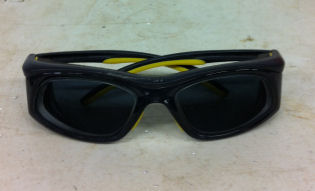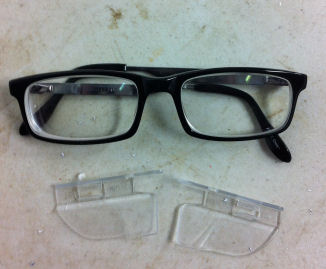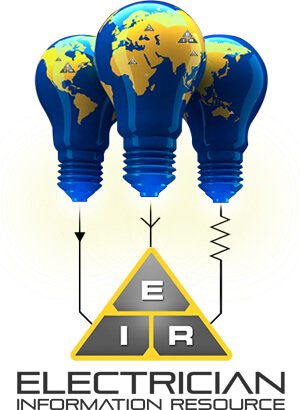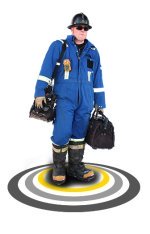Prescription Safety Glasses: Be Safe, See Well
Finding the right pair of prescription safety glasses is not always easy. The average optical store does not stock them, so you may have to check with several opticians to find one that does.

Instead of doing this, many people resort to buying safety glasses online. This is seldom satisfactory. Most of the time they end up with badly-fitting or ill-suited safety eyewear.
To make sure you get the right safety glasses the first time, there are a few things you should do before you buy.
IMPORTANT: Keep your receipt. Company benefits usually pays for safety eyewear if a receipt is provided.
Know Your Prescription
This may sound like a no-brainer, but you would be surprised how many people walk around with prescriptions more than two years old.
Your eyes change. That is why it is important to have them checked at least once every two years. It is very important to have a current prescription, especially when you’re working in a dangerous environment.
Another important aspect is knowing your pupil distance. This is the distance between the center of the pupil in each eye. It’s important to know this because this is the optimal center of the lens in your prescription safety glasses. If you do not get this in the right location, you will not be able to see as well.
Do Not Buy a No-Name Brand
No-name brands are fine for peanut butter or cereal, but not when it comes to your eyes. It is important to get a brand known for reliability. You do not want a pair of prescription safety glasses that are going to break within a few weeks due to poor quality. Not only is this a hassle, it could cause serious damage to your eyes.
The most popular and dependable brands currently include Oakley, RX, Black & Decker and North Safety Glasses. Prices vary, so you may want to do a bit of research to find a pair within your budget.
But you are speaking of the safety of your eyes, so that should be your main concern. Sometimes you have to pay a bit more for high quality prescription safety glasses.
Buy Safety Glasses In Your Size
Just as with any glasses, prescription safety glasses come in a variety of shapes, styles and sizes. You will be using these for work, so comfort should be a priority.
A pair too wide or too narrow will be extremely uncomfortable. They may even cause headaches from pushing to hard on the sides of your head, or they may be constantly falling off.
People have different head sizes. Safety glasses are not a one-size-fits-all type of purchase. It is important to get a pair that will fit properly.
Know Your Safety Code
Prescription safety glasses are made to meet specific safety requirements for various jobs. The glasses must pass strict tests to ensure they meet these requirements. These tests are then assigned a code.

Before you buy a pair of safety glasses, find out what tests the glasses need to pass in order to be acceptable for your line of work. Then find out what the code is for your job.
Only buy safety glasses with the correct code. If the glasses do not meet the standards required for your job, you will have to return them. This is a big hassle and big waste of time. You would be much better off buying the right pair the first time.
Glasses that do not meet the code requirements for your job are also a safety hazard. This could allow a serious injury to occur, when the correct safety glasses would have protected you.
Incorrectly-coded safety wear may also be forbidden in your place of work. A pair of safety glasses need side shields and a CSA logo somewhere on them to pass as safe.
Safety Glasses are a Must
The occupational Safety and Health Act of 1970 officially made it mandatory to wear safety equipment in the workplace. It is responsible for enforcing and determining safety regulations for all businesses and all occupations. This includes everything from hard hats, safety glasses, harnesses, protective clothing and steel-toed boots. Whatever it takes to keep you safe from head to toe.
Many workers do not like to wear any type of personal protection equipment (PPE); safety glasses are no exception. That is why the government had to make it mandatory. Not enough people were volunteering.
Luckily, changes in technology have made PPE more comfortable, and workers less resistant. This results in safer working environments, and less hassles for foremen trying to force workers to keep the PPE on at all times.
Mandatory Personal Protective Equipment
PPE requirements are different for every job and can vary greatly from one industry to another. The OSHA guidelines dictate what type of equipment you need for your particular occupation. Mandatory PPE is designed to protect you from anything which may pose a threat to your health or safety.
Employers are required to assess the working environment, to determine any potential risks or threats to your health or safety. They must then take the necessary precautions to reduce the hazard. In some cases, an OSHA agent may want to inspect the environment himself, to ensure all safety issues are properly addressed.
When a hazard is identified, the employer must educate you and provide you with the necessary personal protective equipment. The education is much more than just informing you of the hazard. It includes thoroughly explaining all of the possible dangers, and educating you on the proper use of the protection equipment.
In most industrial environments, safety glasses are one piece of equipment that is not optional. For example, hard hats are not always required. Factories generally have some areas where hart hats are mandatory, while other areas where there is no risk of falling objects and you may take off your hard hat.
This is not the case with safety glasses. There is almost always a risk of flying debris, and you are not allowed to take off your safety glasses at any time within any part of the factory, except maybe the rest room or cafeteria.
Be Safe and Look Great!
Fortunately, prescription safety glasses today are quite comfortable, and even fashionable. Most people don't mind wearing them.
As long as your prescription safety glasses have lenses with the proper code for your job, you can have frames that are as stylish as you.




